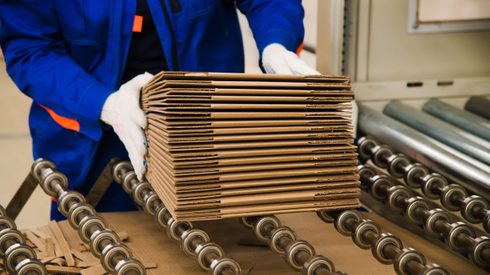“Digital transformation is changing the industry, and that change is fundamentally about using data, especially operational data,” Martin Provencher, industry principal in mining, metals and materials at OSIsoft in Montreal, said. Of the companies that invest in digital technology, only a portion of factories see a significant improvement in efficiency and savings, he argued.
“They invest, but they are not getting the value out of it,” Provencher continued, citing a 2018 McKinsey & Co survey on digital transformation, which found that “only 16% of respondents say their organizations’ digital transformation have successfully improved performance.”
To make the most of this new technology, raw data has to be converted into operational intelligence and presented “in formats that can be easily understood by human decisionmakers… This will empower your people,” Provencher said.
When it comes to artificial intelligence (AI) and machine learning systems in particular, part of the problem stems from heightened expectations surrounding the capabilities of digital technology, Berk Birand, chief executive officer of Fero Labs, New York, said during the panel.
Artificial intelligence is usually presented as a form of “a magic bullet,” a technology that can magically help a company achieve digital transformation, he explained.
“But in reality, much of the discussion around AI is based around hype,” Birand said. “There is no such thing as true AI… It’s mostly a marketing term to sell more services and more software.”
Instead, machine learning methods provide a “legitimate set of powerful statistical tools,” Birand explained. For that technology to provide a meaningful benefit to steelmakers, rather than using off-the-shelf algorithms designed for the technology sector, companies should use machine learning software that was designed for industrial applications.
Success stories
The McKinsey survey also found that companies transitioning to use digital technology can more than double their chances of success by increasing their data-based decision making.
For example, at ArcelorMittal Dofasco in Canada, real-time equipment monitoring and analytics improved the asset reliability of its furnaces by shifting from reactive maintenance to proactive and even prescriptive maintenance, according to Provencher.
The steel company’s investment in digital technology is saving $1 million per year per furnace by reducing downtime for operations, improving output yield and quality by 15%, and increasing the time between furnace re-linings, Provencher said.
According to Birand, after Gerdau North America adopted Fero Labs’ machine learning software – which was designed for the industrial sector – the steelmaker was able to reduce alloy costs by 9% across four plants by increasing yield, reducing scrap usage and decreasing emissions.
A real-time application of the machine learning model allows the operator of a melt shop to add only the required amount of alloys and achieves a higher return on investment, Birand added.
Gerdau also has collaborated with AMI Automation to implement a remote operational monitoring system for the melt shops at four of its plants.
“This is one of the top return on investment digital projects we have currently,” Tony Klippel, melt shop superintendent at Gerdau Long Steel North America in Bradford, Tennessee, said during the panel.
Typically, digital technology is purchased as a capital expenditure, Klippel said. In its contract with AMI, however, Gerdau is implementing digital technology and collaborating with AMI “on an ongoing basis.”
Under the arrangement, Gerdau is able to have the latest technology continuously updated, while the AMITech Center – a remote monitoring facility located in Monterrey, Mexico – maintains daily collaboration “and good communications” with Gerdau engineers overseeing furnace operations.
“This format has been extremely helpful. We have been able to commission systems remotely,” Klippel said, highlighting the benefit of the system during the Covid-19 pandemic.




